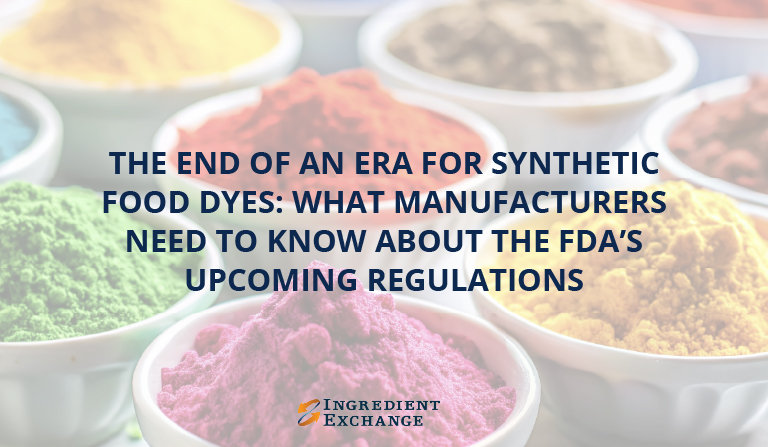In 2025, the U.S. Food and Drug Administration (FDA) announced a phased plan to remove petroleum-based synthetic dyes from the nation’s food supply. For decades, these dyes have been widely used in everything from beverages to baked goods, chosen for their vibrant color, stability, and low cost. Over the next several years, however, manufacturers will need to transition toward naturally derived alternatives.
This change is not just a headline. It represents one of the most significant shifts in food formulation and sourcing in the past 30 years—and it will have a direct impact on procurement teams, R&D departments, and supply chain leaders across the food and beverage industry.
What Is Changing?
The FDA has outlined a multi-year timeline, expected to span three to five years, during which synthetic dyes will be gradually removed from food formulations. While the exact phase-out schedule may be finalized in stages, the intent is clear: petroleum-based colors will no longer be permitted for use in the U.S. market.
This shift is expected to affect a wide range of food categories:
- Confectionery and baked goods
- Carbonated beverages and energy drinks
- Dairy products such as flavored yogurts and ice creams
- Processed snacks and cereals
Why Now?
Two converging forces are behind this regulatory change:
- Scientific Research
Over the past decade, studies have raised questions about the long-term impact of certain synthetic dyes. While no single study has triggered the ban, the cumulative evidence has been enough to prompt a precautionary approach. - Consumer Demand
Clean labels and “naturally sourced” ingredients have become more than a marketing trend—they are now a consumer expectation. Globally, the shift to naturally derived colors is already well underway. The U.S. is aligning itself with regulatory frameworks already adopted in other regions.
What Does This Mean for Food Manufacturers?
Transitioning to natural colors will affect every aspect of product development and sourcing. Key areas of focus will include:
- Reformulation Complexity: Natural colors are more sensitive to heat, pH, and light. Reformulating without compromising appearance or shelf stability takes time and testing.
- Cost Implications: Naturally sourced dyes are generally more expensive and less concentrated, affecting margins and purchasing strategies.
- Supply Chain Planning: Transitioning requires early engagement with new suppliers, creating specifications, and managing limited agricultural resources.
For purchasing managers, this is not a short-term adjustment. It will involve a long-term reconfiguration of sourcing practices.
Act Early to Minimize Risk
Companies that act now—auditing their formulations, assessing sourcing options, and identifying surplus synthetic stock—will be better positioned to manage the upcoming regulatory changes with minimal disruption.
Ingredient Exchange works directly with manufacturers to help navigate these shifting markets. Whether you need help sourcing natural colors, building inventory strategies, or finding a market for your current synthetic inventory, early planning will be critical.
To discuss strategies for securing natural food dyes—or to find a buyer for your excess supply—contact Ingredient Exchange today.
